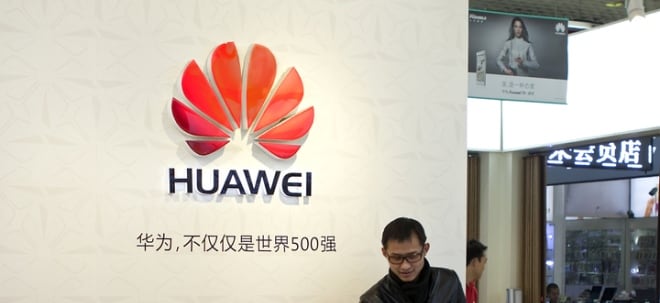New IDTechEx Report Examines How QLC SSDs Are Disrupting the HDD Storage Market
BOSTON, April 24, 2025 /PRNewswire/ --For enterprises, data storage is not just a technical challenge but a financial one. The new report from market intelligence firm IDTechEx, "Emerging Memory and Storage Technology 2025-2035: Markets, Trends, Forecasts", provides an in-depth analysis of the evolving storage landscape and its impact on cost, efficiency, and scalability. A 2022 Seagate study found that some organizations dedicate up to a third of their IT budget to storage, with 90% concerned about rising costs. With inflation, energy prices, and compute-heavy workloads further driving up cloud expenses, businesses are rethinking their approach to storage.
Ethan Phillips, IDTechEx Technology Analyst and one of the authors of the report, explains: "Historically, Hard Disk Drives (HDDs) have dominated large-scale storage, offering low-cost, high-capacity solutions for cold and archival data. However, rising energy costs and the demand for better performance have positioned QLC (Quad-Level Cell) Solid State Drives (SSDs) as a serious alternative, especially for read-intensive workloads. With superior power efficiency, storage density, and operational simplicity, QLC SSDs are increasingly challenging HDDs on Total Cost of Ownership (TCO)."
For decades, HDDs were the backbone of digital storage; they were used across everything from consumer laptops to enterprise data centers. However, the landscape has shifted. As solid-state drives (SSDs) have become faster, have higher capacity, and are more affordable, HDDs have steadily retreated from high-performance and consumer markets. As of early 2025, SSDs are the standard in most edge devices and consumer electronics due to their speed, compact form factor, and durability.
This transition is reflected in both market structure and financial data. In 2024, the HDD market generated US$15.1 billion in revenue, with Seagate and Western Digital each holding roughly 40% of the market and Toshiba covering the remaining market. However, most of this revenue is now concentrated in mass capacity drives, more specifically nearline HDDs, which are primarily used in data centers and enterprise storage systems. Currently, nearline HDDs make up around 60% of total HDD revenue, but IDTechEx forecasts that figure will exceed 95% by 2035 as mass capacity drives become the sole stronghold for HDDs in the face of growing SSD adoption.
To keep pace with rising storage demands, HDD innovation has increasingly centred on boosting both capacity and performance, particularly for large-scale, cost-sensitive deployments. Looking ahead, HDDs exceeding 50TB are expected as early as 2026–2027. However, as SSD technologies (particularly QLC NAND) continue to evolve, they are starting to challenge HDDs not only on performance, but increasingly on capacity and cost-effectiveness, raising the question of whether flash-based storage could encroach on HDD territory even in large-scale, cold storage environments.
QLC SSDs store four bits per cell, enabling significantly greater storage density than earlier NAND types like TLC or MLC. This architectural shift allows for larger capacities at a lower cost per gigabyte, a critical factor in large-scale storage environments. One of QLC's defining advantages is its ability to scale to extreme capacities. Since its launch, capacity growth has accelerated to over three times the capacity of the largest enterprise HDDs.
This leap in capacity is matched by performance, efficiency, and scalability. These performance gains accelerate AI, analytics, and real-time workloads, making QLC SSDs an increasingly compelling alternative for modern applications.
Beyond capacity and efficiency, QLC SSDs are also gaining traction due to their read-optimized characteristics, making them ideal for AI inference workloads, archival storage, backups, and large-object storage. As flash costs decline, QLC is narrowing the cost-per-terabyte gap with HDDs, coming closer to parity in total deployment cost, especially when factoring in performance, density, and operational simplicity. With growing capacities and efficiency gains, QLC SSDs are becoming an increasingly competitive alternative, offering improved cost per terabyte, capacity density, and capacity-to-power ratio, challenging HDDs even in traditionally HDD-dominated storage applications.
For those looking to understand the full picture, IDTechEx's new report, "Emerging Memory and Storage Technology 2025-2035: Markets, Trends, Forecasts", provides the most comprehensive assessment to date of the shifting memory and storage landscape.
To find out more about this IDTechEx report, including downloadable sample pages, please visit www.IDTechEx.com/Memory.
For the full portfolio of semiconductors, computing, and AI market research available from IDTechEx, please see www.IDTechEx.com/Research/Semiconductors.
Contact:
Charlotte Martin
01223812300
393907@email4pr.com
![]() View original content to download multimedia:https://www.prnewswire.com/news-releases/new-idtechex-report-examines-how-qlc-ssds-are-disrupting-the-hdd-storage-market-302435868.html
View original content to download multimedia:https://www.prnewswire.com/news-releases/new-idtechex-report-examines-how-qlc-ssds-are-disrupting-the-hdd-storage-market-302435868.html
SOURCE IDTechEx

